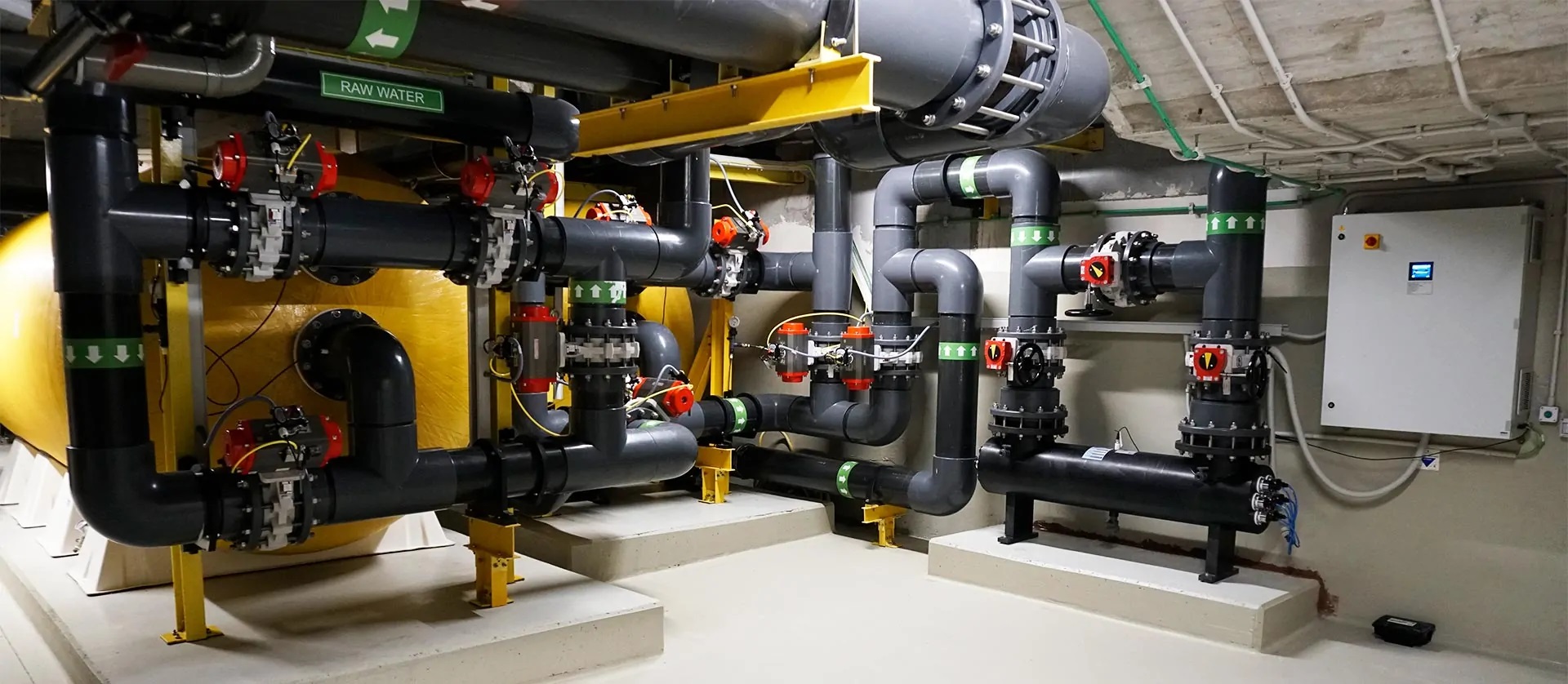
Filtration equipment is used to filter, thicken, or clarify a mixture of different elements. There are several different ways to classify products. Examples include:
Below are descriptions of different types of filtration equipment including: sedimentation, gravity, vacuum, pressure, thickeners, clarifiers and centrifugal separators.

Sedimentation equipment uses a gravitational or chemical process to cause particles to settle to the bottom. Products that use flocculation and gravity sedimentation are included in this category.
Flocculation - Flocculation is the formation of a cake or aggregate, usually through a chemical process, although a magnetic field may be used for particles containing iron. Flocculation is an important process in the treatment of wastewater.
Gravity sedimentation - Gravity sedimentation is used to reduce the solids concentration of the material to be processed. It can be either a clarification or a thickening process. In gravity sedimentation, the heavier particles sink to the bottom under the force of gravity. The rate of settling varies depending on the different in density between the liquid phase and the solids and the size of the solid particles.
Gravity filtration equipment uses the hydrostatic pressure of a pre-filter column above the filter surface to generate the flow of the filtrate. Common products include bag filters, gravity nutsches, and sand filters.
Bag filter - Bag filters are used mainly as collection equipment. They use bag-shaped woven-fabric or felt filters. Bag filters are not recommended for process filtration.

Gravity nutsche - A gravity nutsche is a tank with a perforated or porous false bottom. They may or may not have a separate filter medium. The hydrostatic head of the slurry in the tank provides the filtration driving force.
Sand filter - The sand filter is the most common type of gravity filter. It is constructed of a tank containing layers of gravel and sand or pulverized anthracite. The size of the bed particle decreases from bottom to top of the bed. This granular bed forms the filter media. Sand filters are clarifying equipment used, although a cake may form on the surface. They are used almost exclusively for water conditioning.
Vacuum filtration is a category of liquid-solid separation equipment and filtration equipment that encompasses many different types of products. Vacuum filters are available in batch (vacuum nutsches and vacuum leaf filters) and continuous (drum filters, disk filters and horizontal filters) operating cycles. Continuous vacuum filters are widely used in the process industry. The three main classes of continuous vacuum filters are drum, disk, and horizontal filters. All of these vacuum filters have the following common features:
Examples of this filtration equipment include disc filters, horizontal belt filters, rotary drum filters, rotary drum precoat filters, table filters, tilting pan filters, tray filters, and vacuum nutsches.

Pressure filters operate at superatmospheric pressures at the filtering surface. The media is fed to the machine by diaphragm, plunger, screw and centrifugal pumps, blowcase,s and streams from pressure reactors. Most pressure filters are batch, or semi-continuous, machines. Rotary drum pressure filters and some others have continuous operating cycles. Continuous machines are more expensive and less flexible than batch machines.
Types of pressure filtration equipment include automatic pressure filters, candle filters, filter presses, horizontal plate pressure filters, polishing filters, and vertical pressure leaf filters.
Thickeners are used to separate solids from liquids by means of gravity sedimentation. Most thickeners are larger, continuous operation pieces of equipment. They are used for heavy duty applications such as coal, iron ore taconites, copper pyrite, phosphates, and other beneficiation processes. Thickeners are a category of industrial filtration equipment that includes conventional thickeners, high-rate thickeners, lamella thickeners, and tray thickeners
Clarifiers encompass conventional clarifiers, sludge-basket clarifiers, suction clarifiers, and reverse osmosis (RO) clarifiers. The primary end product of clarifiers is a clarified liquid. They are virtually identical in design to thickeners, but have a lighter duty drive mechanism. They are generally used for industrial and residential waste.
This selection will return all clarifiers, including conventional clarifiers, reverse osmosis equipment, sludge-blanket, suction, and other clarifiers.
Centrifugal separators use centrifugal force to separate solid particles from a liquid solution. They include both centrifuges and hydrocyclones. A centrifuge is a device for separating particles from a solution according to their size, shape, density, viscosity of the medium and rotor speed. A hydrocyclone uses centrifugal force to separate particulate elements of different sizes, shapes, and densities
This selection will return all centrifugal separators, including centrifuges, hydrocyclones, and others.

Application ratings for filtration equipment is based on published literature and include adhesives, chemicals, construction materials, cosmetics, drinking water, food and beverages, heat transfer fluids, oil and fuel, ore and minerals, paint and coatings, paper and pulp, and waste and sludge. Filtration equipment for sanitary and pharmaceutical applications is also available.
Filtration equipment must adhere to certain standards to ensure proper design and functionality. Additional standards can be found at the IHS standards store.
AHRI 850 I-P - This standard applies to factory-made Air Filter Equipment and Air Filter Media as used in such equipment, for removing particulate matter, when used in environmental conditioning of inhabited spaces in commercial and industrial facilities.
BS EN 14898 - This standard applies to water conditioning equipment inside buildings.
ISO 16900-3 - This part of ISO 16900 specifies the test methods for particle filter penetration of separate or integral filters for respiratory protective devices.